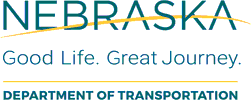Nebraska Local Technical Assistance Program

Nebraska Department of Transportation: Research Reports
Date of this Version
6-2019
Document Type
Article
Citation
Sharma, A. and Ahsani, V. (2019). Assessing the Impact of Game Day Schedule and Opponents on Travel Patterns and Route Choice using Big Data Analytics. NDOT Research Report SPR-1(18) M078.
Abstract
The transportation system is crucial for transferring people and goods from point A to point B. However, its reliability can be decreased by unanticipated congestion resulting from planned special events. For example, sporting events collect large crowds of people at specific venues on game days and disrupt normal traffic patterns.
The goal of this study was to understand issues related to road traffic management during major sporting events by using widely available INRIX data to compare travel patterns and behaviors on game days against those on normal days. A comprehensive analysis was conducted on the impact of all Nebraska Cornhuskers football games over five years on traffic congestion on five major routes in Nebraska. We attempted to identify hotspots, the unusually high-risk zones in a spatiotemporal space containing traffic congestion that occur on almost all game days. For hotspot detection, we utilized a method called Multi-EigenSpot, which is able to detect multiple hotspots in a spatiotemporal space. With this algorithm, we were able to detect traffic hotspot clusters on the five chosen routes in Nebraska. After detecting the hotspots, we identified the factors affecting the sizes of hotspots and other parameters. The start time of the game and the Cornhuskers’ opponent for a given game are two important factors affecting the number of people coming to Lincoln, Nebraska, on game days. Finally, the Dynamic Bayesian Networks (DBN) approach was applied to forecast the start times and locations of hotspot clusters in 2018 with a weighted mean absolute percentage error (WMAPE) of 13.8%.

